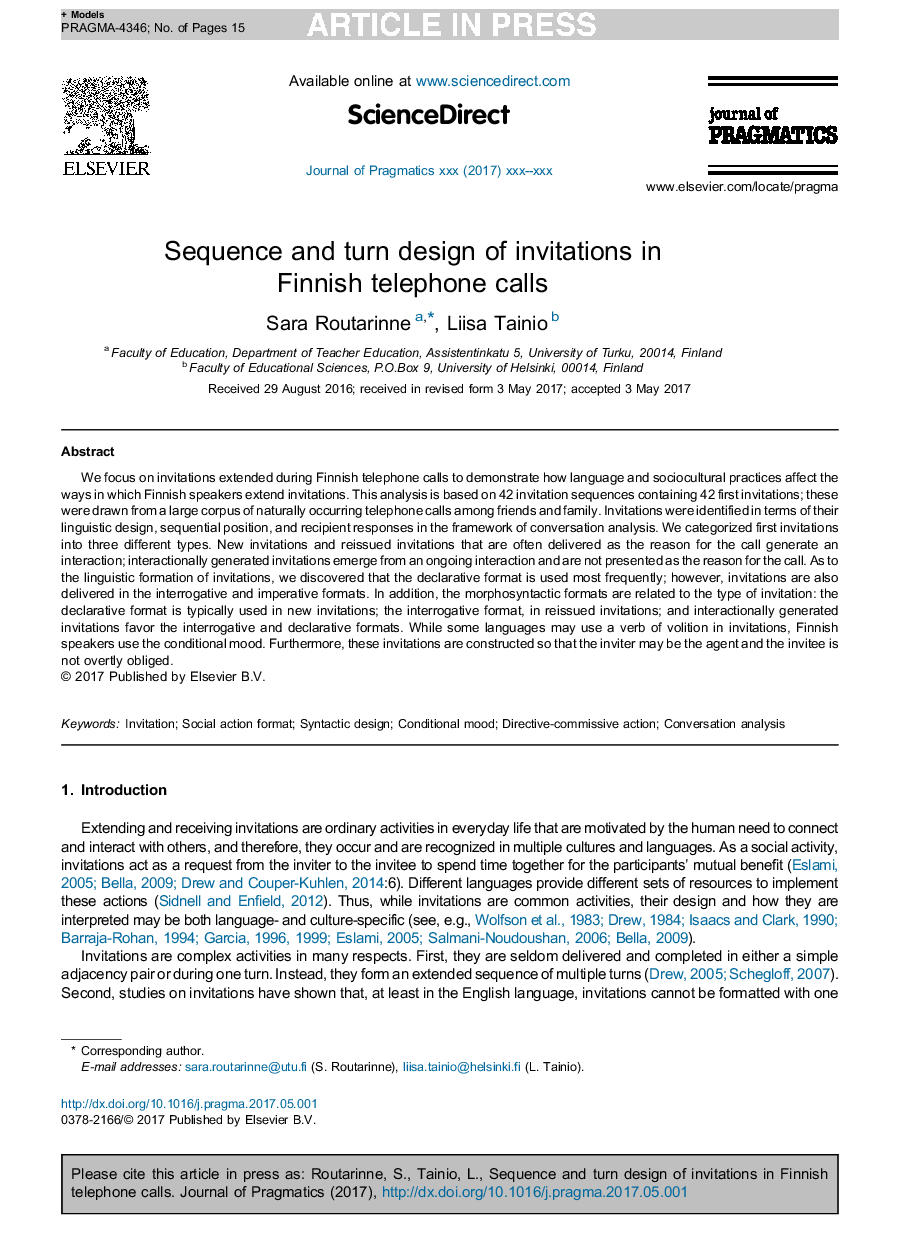| Article ID | Journal | Published Year | Pages | File Type |
|---|---|---|---|---|
| 7297541 | Journal of Pragmatics | 2018 | 15 Pages |
Abstract
We focus on invitations extended during Finnish telephone calls to demonstrate how language and sociocultural practices affect the ways in which Finnish speakers extend invitations. This analysis is based on 42 invitation sequences containing 42 first invitations; these were drawn from a large corpus of naturally occurring telephone calls among friends and family. Invitations were identified in terms of their linguistic design, sequential position, and recipient responses in the framework of conversation analysis. We categorized first invitations into three different types. New invitations and reissued invitations that are often delivered as the reason for the call generate an interaction; interactionally generated invitations emerge from an ongoing interaction and are not presented as the reason for the call. As to the linguistic formation of invitations, we discovered that the declarative format is used most frequently; however, invitations are also delivered in the interrogative and imperative formats. In addition, the morphosyntactic formats are related to the type of invitation: the declarative format is typically used in new invitations; the interrogative format, in reissued invitations; and interactionally generated invitations favor the interrogative and declarative formats. While some languages may use a verb of volition in invitations, Finnish speakers use the conditional mood. Furthermore, these invitations are constructed so that the inviter may be the agent and the invitee is not overtly obliged.
Keywords
Related Topics
Social Sciences and Humanities
Arts and Humanities
Language and Linguistics
Authors
Sara Routarinne, Liisa Tainio,
